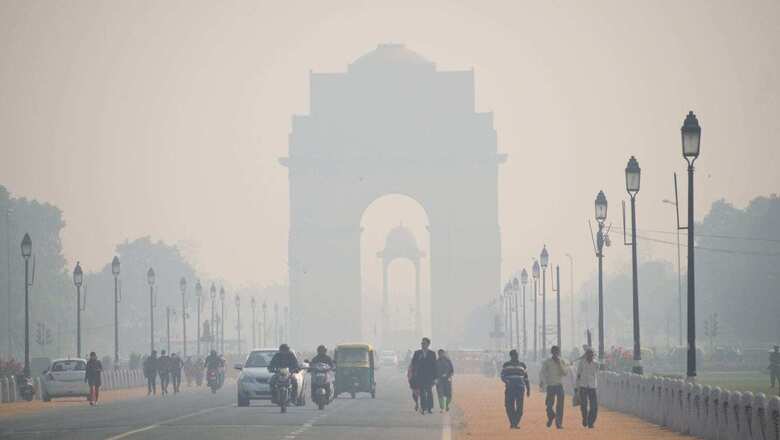
views
With the party at the helm in both Punjab and Delhi, the Arvind Kejriwal-led government can no longer pass the buck for a problem that has only got worse over the years — thanks to the politics of blame game played out every October among the neighbouring states.
From Bad To Worse
With as many as 3,182 industries located across the NCR and over 10 million registered vehicles in Delhi alone, stubble burning is clearly not the main cause for the toxic smog that envelops the national capital every year.
Delhi remains one of the world’s most polluted cities all round the year but the sudden spike in crop fires during winter certainly makes it worse. Over 20 million-ton paddy straw is generated every year during paddy harvesting, a large amount of which is usually burnt by farmers to ready the land for the next crop cycle. As winds slow down and temperatures begin to drop, the plumes of smoke from the fires mix with the already potent mix of emissions from the transport and industrial sector, creating a toxic blanket of smog over the region.
What makes the problem more challenging is the stark failure of the governments to provide scientific solutions that appeal to farmers. Despite being aware of its ill-effects on their health, they continue to set fire to the crop residues, listing it as a “more effective and economical way” to ready the land for next crop cycle in the shortest possible time. The window is even shorter for potato growers, where delay in sowing could hurt crop yields. The late arrival, and subsequent delayed withdrawal of monsoon, has further shortened the window for farmers.
Punjab’s Big Promises
With all eyes on the Punjab government, it has already begun to tie the loose ends. A mega awareness campaign is set to begin from September 27 with school children as new ambassadors for educating farmers about ill-effects of stubble burning.
The Bhagwant Mann-led government has extended the deadline for farmers to apply for subsidy on the Happy Seeder machines that allow them to sow wheat without burning paddy straw. It has even promised to provide at least 15 such machines to block-level agriculture officers to allow other small farmers to use free of cost. The tractor-operated machine cuts the paddy stubble, mixes it with soil, prepares land, and simultaneously help in sowing seeds. However, it has often remained out of reach for small farmers due to its high cost (Rs 1 lakh).
The district officials are urging farmers to switch to more scientific methods for paddy straw management like decomposer spray. This year, the agriculture department is also planning to spray 5,000 acres of D-decomposer solution as a pilot project as an experiment to absorb the stubble in the soil without burning. Another proposal to make it mandatory for the brick kilns to use some percentage of paddy straw as fuel is also in the works.
Punjab Agriculture Minister Kuldeep Singh Dhaliwal has even instructed senior officers in the agriculture department not to sanction leave to any of the employees/colleagues till November 7 – when the harvest season gets over. A state-level control room is being set up to keep a vigil on incidents of stubble burning.
New Hope In Biogas Plants
The Compressed Biogas (CBG) plant in Sangrur — touted as Asia’s largest — is being offered as a long-lasting solution to stubble burning. The long-awaited project has finally started commercial operations this year, with a 33.2 tonne of bio-CNG per day. October onwards, its consumption would gradually increase to 300-ton paddy stubble per day. Another project with a capacity of 100 KL 2G ethanol per day is coming up in Bathinda district and expected to be completed next year. As many as 42 additional CBG projects of total capacity 492.58 tons per day have also been allocated.
Solution
Rhetoric aside, it is time for the government to bring an actual change if it plans to clear the skies not only for the region. An end to stubble burning may ameliorate the pollution woes to an extent, but the larger problem rests with Delhi’s burgeoning urban woes. The four-fold increase in vehicles, an inadequate public transport system, and the continuous emissions from coal-based thermal power plants are major contributors to its filthy air.
With the big mandate that it now has, will AAP help Delhi see a better winter this year?
Read all the Latest News India and Breaking News here

















Comments
0 comment